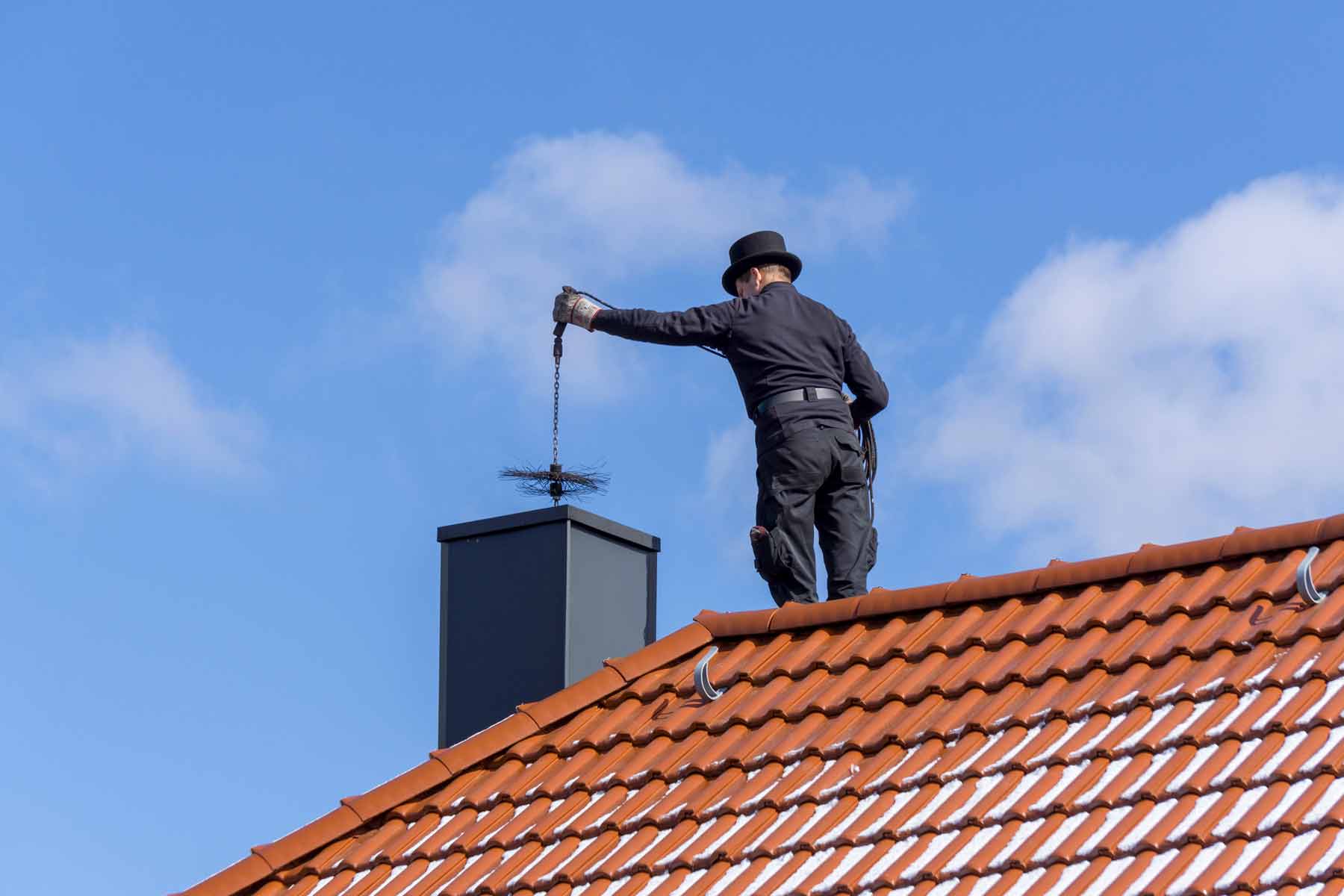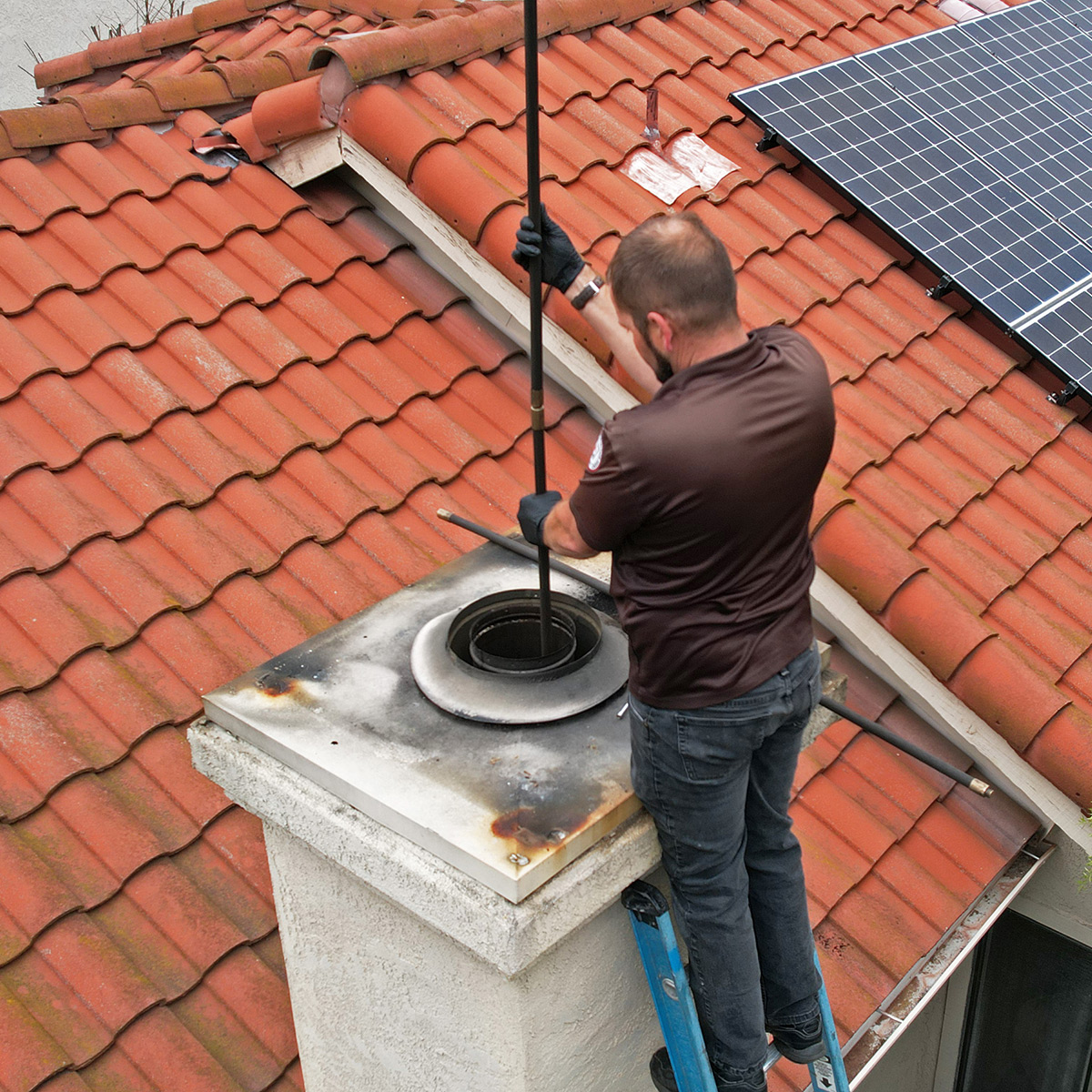Chimney Clean San Jose Excellence: Making Sure a Clean and Efficient Fireplace
Chimney Clean San Jose Excellence: Making Sure a Clean and Efficient Fireplace
Blog Article
Smokeshaft Cleansing: A Step-by-Step Guide to Preserving a Healthy And Balanced Fire Place
Preserving a healthy and balanced fireplace is essential for the security and performance of your home. Regular chimney cleaning is an important part of this maintenance regimen. In this step-by-step overview, we will supply you with thorough guidelines on exactly how to effectively cleanse your chimney, making certain that it works efficiently and minimizes the danger of fire hazards. By adhering to these standards, you will discover exactly how to collect the essential tools, do a visual assessment, clear particles and accumulation, move the chimney, and finish the final steps for ongoing upkeep. With a specialist technique and interest to detail, you can with confidence deal with your fire place and appreciate its warmth and comfort for several years to find.
Collecting the Needed Tools
To begin the process of smokeshaft cleansing, the very first step is to gather all the needed devices. Having the right devices available makes sure a effective and safe cleansing process. The vital devices for chimney cleansing consist of a smokeshaft brush, a ladder, ground cloth or plastic sheets, a flashlight, gloves, and a dirt mask.
The smokeshaft brush is the key tool made use of to get rid of soot and creosote accumulation from the flue - Chimney Sweep San Jose. It is essential to choose a brush that matches the size and form of your chimney.
A flashlight is crucial for checking the smokeshaft's interior for any signs of damage or blockages. Gloves are necessary to safeguard your hands from soot and other hazardous compounds, while a dirt mask aids prevent the inhalation of debris.
Executing a Visual Inspection

Using a flashlight, carefully examine the interior wall surfaces of the smokeshaft for any type of indicators of damage, such as splits, loosened bricks, or mortar degeneration. These concerns can jeopardize the smokeshaft's structural honesty and position a serious security risk. Furthermore, look for any signs of water damage, such as discoloration or efflorescence, as this can show a dripping chimney cap or flashing.
Following, inspect the chimney flue for any kind of blockages. Search for the existence of nesting products, leaves, or particles that might have built up in time (Chimney Sweep San Jose). These blockages can limit air movement, boost the risk of carbon monoxide gas build-up, and hinder the chimney's ability to properly air vent smoke
During the aesthetic evaluation, pay very close attention to the chimney crown, which is the leading surface area that secures the chimney from moisture. Search for splits or missing items in the crown, as these can enable water to enter the smokeshaft and trigger substantial damage.
Cleaning Particles and Build-up
After completing the visual assessment, the next action in chimney cleaning entails cleaning particles and accumulation to guarantee the correct functioning of the fireplace. Gradually, debris such as leaves, twigs, and animal nests can accumulate in the chimney, blocking the flow of air and triggering prospective fire dangers. Additionally, the accumulation of creosote, a tar-like substance, is a common trouble in chimneys. Creosote is developed when wood or fossil gas are shed, and otherwise gotten rid of routinely, it can result in chimney fires.
To remove debris and build-up, it is essential to use the right devices and techniques. A chimney brush, particularly made for this function, is made use of to remove loosened particles and creosote from the chimney walls. It is crucial to select a brush that matches the dimension of your smokeshaft to ensure effective cleaning. Prior to beginning the cleansing process, see to it to cover the fire place available to prevent debris from falling right into the area.
To start, put the brush right into the chimney and move it up and down, rubbing the wall surfaces to displace any debris or creosote. When the cleaning is total, make use of a vacuum cleaner look at more info or a chimney brush extension to get rid of the dislodged particles from the fireplace.

Brushing Up the Smokeshaft
The sweeping of the chimney is a vital action in preserving a healthy fire place. In time, soot, creosote, and other debris can accumulate in the chimney, blocking the circulation of air and possibly triggering a hazardous accumulation of flammable materials. Normal smokeshaft brushing up not only guarantees proper ventilation but additionally prevents the threat of smokeshaft fires.
When it comes to smokeshaft sweeping, it is highly advised to employ a professional smokeshaft move. These experts have the understanding and devices necessary to safely and efficiently remove the accumulated debris from your smokeshaft.
It is essential to note that the regularity of chimney sweeping relies on several variables, such as the sort of gas used, the amount of use, and the type of smokeshaft. As a general guideline, it is suggested to have your smokeshaft brushed up and inspected at the very least yearly.
Final Actions and Upkeep
After completing the chimney sweeping process, the initial action in the last upkeep is to evaluate the smokeshaft cap and spark arrestor. These components avoid debris, animals, and rainwater from going into the chimney.

Check the within of the fireplace for any type of indications of wear and tear, such as cracks, loose blocks, or damaged mortar. These problems can influence the structural integrity and security of the fire place. Seek advice from an expert smokeshaft move or mason to resolve them without delay. if any kind of troubles are identified.
Ultimately, take into consideration mounting carbon monoxide gas detectors near the fireplace and throughout your home. These tools can detect the presence of this dangerous gas, giving a very early caution system in instance of a smokeshaft breakdown. Regularly examine and change the batteries in these detectors to ensure their efficiency.
Conclusion
In final thought, complying with a step-by-step guide for smokeshaft cleansing is important in preserving a healthy fire place. By collecting the needed tools, carrying out a visual examination, getting rid of debris and accumulation, and sweeping the chimney, property owners can guarantee the safety and performance of their fireplace.
The essential tools for chimney cleansing include a smokeshaft brush, a ladder, drop towels or plastic sheets, a flashlight, gloves, and a dirt mask.
A smokeshaft brush, particularly developed for this objective, is utilized to remove loosened debris and creosote from the chimney wall surfaces. Routine smokeshaft sweeping not just guarantees proper ventilation yet likewise prevents the danger of smokeshaft fires.
When it comes to chimney sweeping, it is very recommended to employ an expert chimney sweep. After finishing the chimney sweeping process, the initial step in the final maintenance is to check the smokeshaft cap and spark arrestor.
Report this page